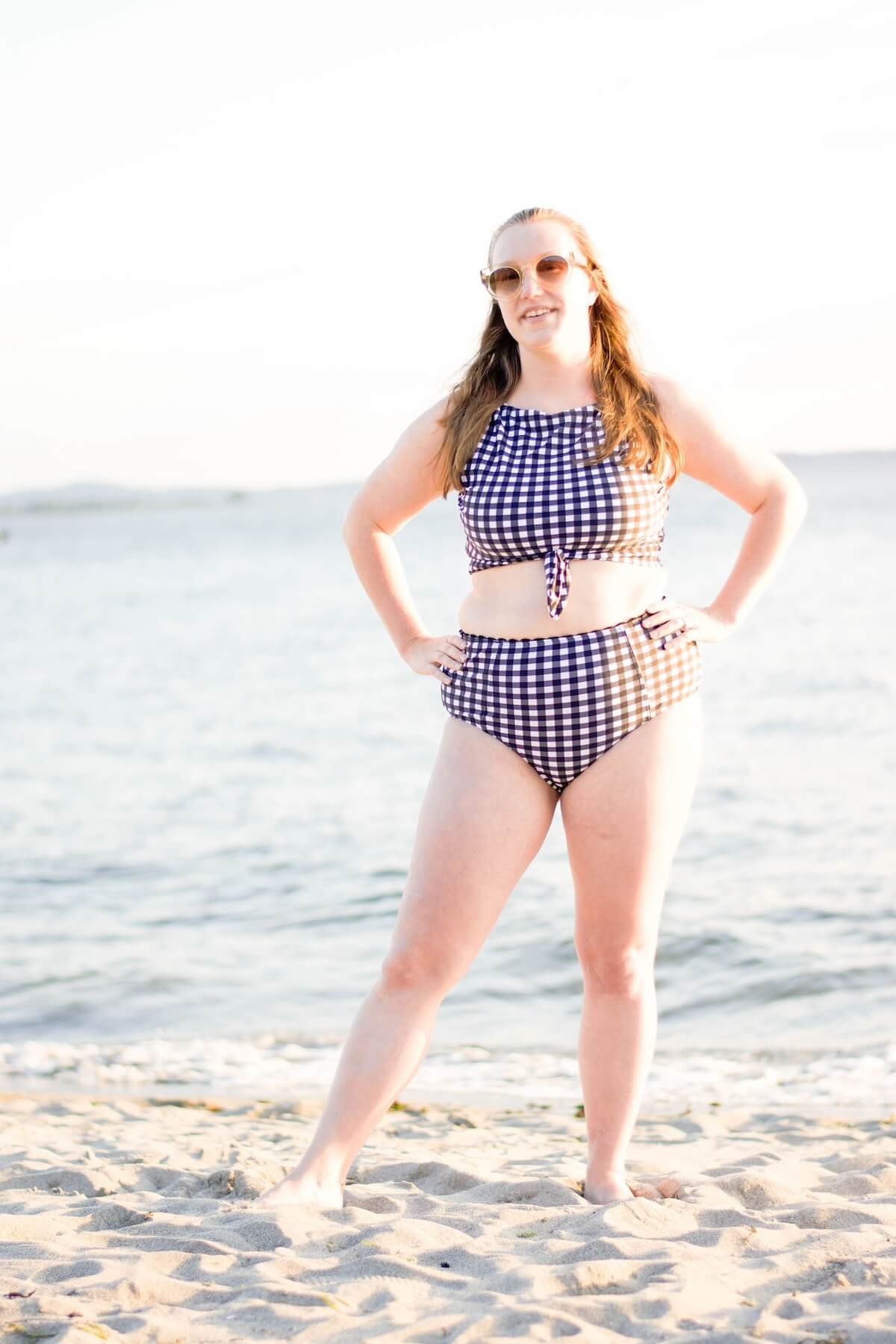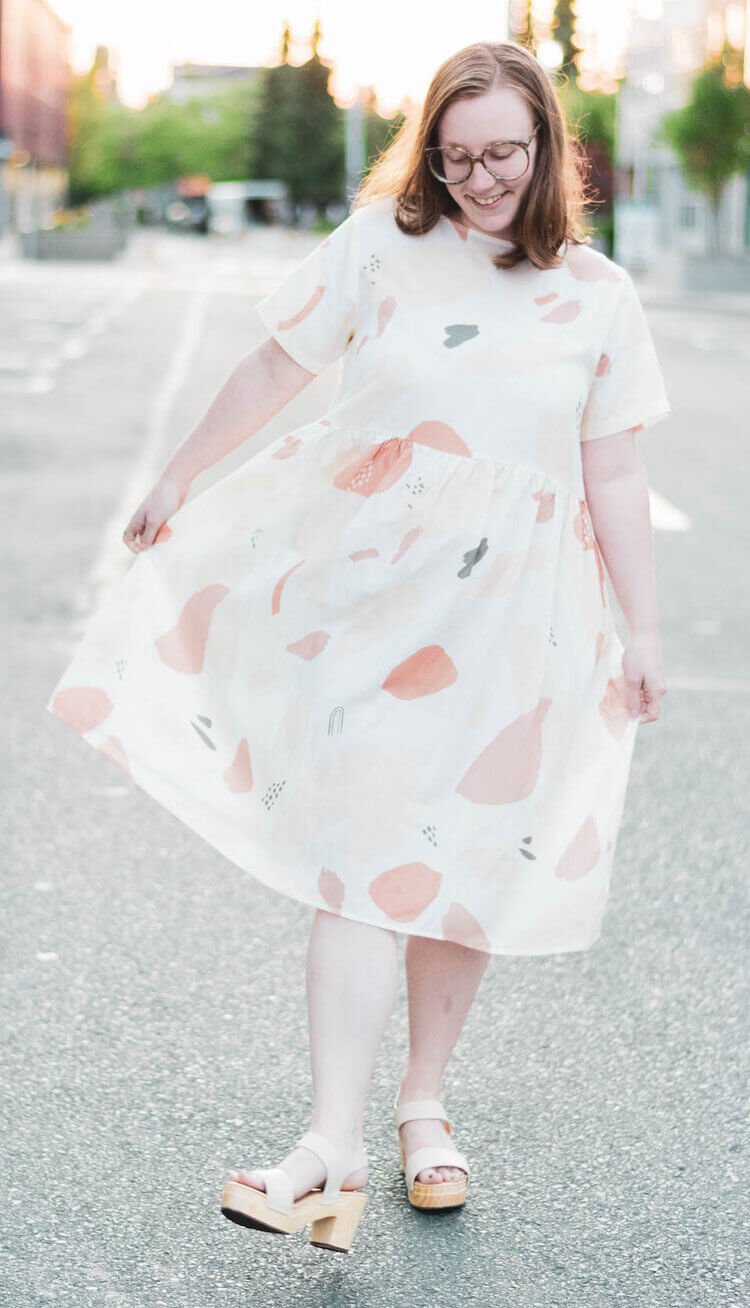What is Fast Fashion? Brands to Avoid & Where to Shop Instead
Scroll through social media and every week you’ll see new looks and new styles. On influencers. On celebrities. On fashion accounts.
What you’re seeing is the product of fast fashion: a practice that has turned the fashion industry’s traditional two seasons into 52 micro seasons, one for every week of the year. In extreme cases, it’s even become daily.
This post does contain affiliate links which means we might make a commission off of a purchase you make, but this is at no additional cost to you! Affiliate links help us keep The Honest Consumer as a free resource to those learning about conscious consumerism.
What is Fast Fashion?
Fast fashion is the practice of moving clothing at lightning speed from catwalks to retailers to keep up with constant and ever-changing trends and demands. To fulfill this demand clothing is mass-produced at a rapid rate.
This speed is helped along due to faster manufacturing and shipping processes, as well as online shopping. With the power to shop anytime, anywhere at your fingertips, you can instantly buy the hottest new looks.
Since these hot looks are meant to be fleeting, and available to everyone, there is more focus on speed of production and less on quality. Cheaper often inferior fabrics are used to lower prices.
Coupled with quick and careless designs, the result is a low-quality product. But in the context of all that is “new and trendy,” this doesn’t matter because you’re not meant to be wearing it next week anyway.
As a result, clothing is thrown out after barely being worn or because the poor quality of the fabric and design doesn’t allow it to last beyond a few wears. This is exacerbated by mass production resulting in too much stock which cannot always be sold because it’s gone out of fashion.
Surplus clothing is consequently thrown out or even burned, usually also in an attempt to maintain exclusivity. There are also customers who buy and return items after only wearing them once, and sometimes these are thrown out too.
Fast fashion is practiced by high-end brands like Zara and H&M, but even department stores like Macy’s and J.C. Penny’s have joined the game to be able to compete in the market.
While fast fashion has been said to “democratize” fashion due to all styles being available to all people, the reality is that it still negatively impacts people, as well as the planet.
Why is Fast Fashion Bad for the Planet?
The fashion industry is one of the dirtiest industries in the world, emitting up to 10% of global carbon emissions. Raw materials like oil are extracted from the earth to make plastic which in turn is used to make synthetic fabrics such as polyester and nylon.
Add on the water- and energy-intensive manufacturing processes and the transportation needed for distributing not only materials but the final product, and it is easy to understand why the industry emits so many greenhouse gas emissions, contributing to human-induced climate change.
The fashion industry uses around 93 billion cubic meters of water per year, a lot of which becomes toxic due to dirty manufacturing processes. Textile dyeing creates a lot of wastewater, which becomes toxic due to the presence of certain chemicals and heavy metals.
Chemicals are also present in the pesticides used to grow cotton, one of the world’s most popular fabrics. Agricultural runoff and textile dyeing release chemicals and heavy metals into nearby rivers, lakes, and streams, affecting aquatic life.
Once clothing is in your home, it continues to create environmental problems. When clothes are washed, especially synthetics, microplastics are released making their way into waterways where they may also impact aquatic life.
When clothing has been worn out (or is no longer trendy), it is often thrown out, piling up in landfills. In 2018, 11 million tons of textile waste were thrown out in the US alone. While some clothing can be recycled, less than 1% of used clothing is recycled into new clothes.
Furthermore, it can be expensive and difficult to recycle clothing, particularly when it’s made from mixed materials that are difficult (and take a lot of water and energy) to separate.
A lot of the environmental impacts affect people too. Polluted water affects not only aquatic life but people in surrounding communities. Air quality is affected too when clothing dumped into landfills is unable to break down and releases toxins into the air. Dyed and treated fabrics may even affect you when you’re wearing the final product.
If not thrown into the trash, many people donate their clothes; however, second-hand clothing is often dumped in low-income countries, leaving them with a surplus of stock. That which is not donated or sold ends up in landfills and waterways.
Why is Fast Fashion Bad for People?
Furthermore, people in many of these countries are usually the ones making the clothes in the first place but receive little to no benefit from the profits.
The exploitative and abusive nature of the fast fashion industry is probably its dirties open secret. The fast fashion business model is notorious for its poor working conditions, exploitative labor practices, child labor, and low wages for factory workers.
In recent decades the industry has been taken to task for this exploitation, only for production to move overseas where lax labor laws are abused.
Occupational and safety standards are often not enforced leading to abusive practices and health hazards that may result in lung problems, endocrine system dysfunction, and cancer, as well as work-related injuries and even death.
One of the prime examples is the collapse of the Rana Plaza factory in Bangladesh in 2013, which killed more than 1,100 workers.
On top of that fast fashion is made with cheap materials. These cheap clothes can contain materials harmful to our health and skin. Plus, the clothes often times fall apart and need to be replaced quickly.
This can be a negative impact for consumers’ wallets. Instead of falling for the cheap prices opt for investing in ethically made clothing if you can.
Quick list of Fast Fashion Facts
According to Fashion Revolution, “150 billion items of clothing are delivered out of factories annually yet Americans alone throw away approximately 14 million tonnes of garments each year, that’s over 36 kg per person. According to the Environmental Protection Agency, 84% of unwanted clothes in the United States in 2012 went into either a landfill or an incinerator.”
According to The True Cost, Americans discard 82 pounds of textile waste a year, only about 10% of what's donated gets sold in thrift stores. That adds up to around 11 million tons of textile waste from the U.S. alone.
Collapse of Rana Plaza in Bangladesh, a garment factory that made clothes for some popular Western wold brands, killed 1,138 people and injured another 2,500 were injured.
Fashion Revolution reports, “A century ago, we spent more than half our money on food and clothes, today we spend less than a fifth. As a society we purchase 400% more clothing today than we did just 20 years ago.”
According to the War on Want, “The majority of garment workers in Bangladesh earn little more than the minimum wage, set at 3,000 taka a month (approximately £25), far below what is considered a living wage, calculated at 5,000 taka a month (approximately £45), which would be the minimum required to provide a family with shelter, food and education.”
According to The True Cost, “More than 90% of that cotton is now genetically modified, using vast amounts of water as well as chemicals. Cotton production is now responsible for 18% of worldwide pesticide use and 25% of total insecticide use. The largely untested impacts of these chemicals on both the land and human health are beginning to be questioned by those working in the industry. As our skin is the largest organ, these chemicals are passed into the bloodstream of the people wearing these clothes.”
In the mid-1960s, 95 percent of America’s clothes were made domestically, whereas, today, 97 percent are made abroad. (True Cost)
Fashion—a $2.5 trillion sector—is the second most polluting industry on Earth, right behind oil. (True Cost)
During COVID-19 big name brands such as JC Penney, Lululemon, Gap, Kohls, Forever 21, & many more cancelled or passed orders in Bangladesh leaving garment workers unpaid for work that was already completed. Bangladesh’s garment industry accounts for 80% of the country’s exports, making its economy and the livelihood of its population reliant on apparel orders from the United States and Europe. Learn more from Remake’s PayUp campaign and petition.
What Fast Fashion Brands Should I Avoid?
If you can, you should avoid ALL fast fashion companies! Consider valuing the clothes in your closet or purchasing from ethical fashion brands.
Here are a few fast fashion brands to start avoiding and a quick sentence on why….for most of these brands there are too many reasons to list out. Be sure to check out our guide featuring alternative ethical brands to fast fashion favorites.
Victoria’s Secret has been known to have child labor and prison labor within their supply chain. Plus, the recent documentary Angels & Demons documents ethical issues throughout their history as a company.
Forever 21 has been known for not paying employees fairly, not paying garment workers a livable wage, not having a transparent supply chain, and using harmful dyes and materials in their garments.
Top Shop has had slave labor and child labor within their supply chain.
H&M is known for greenwashing. While they claim to have a line of clothes made from recycled materials their business is built on consumers viewing clothing as disposable which is not sustainable.
JC Penney’s clothes were made in Rana Plaza which collapsed and responsibility was not taken. JC Penney was also one of the retailers canceling their orders during COVID-19.
The Children’s Place clothes were made in Rana Plaza which collapsed and responsibility was not taken. More recently The Children’s Place was also one of the retailers canceling their orders during COVID-19.
Gap has been known to have child labor within their supply chain.
Walmart is known for mistreating workers through out their supply chain. Recently they were also part of the canceled COVID-19 orders.
What Can We Do About Fast Fashion?
While the industry needs to take responsibility for its actions and stricter regulations must be enforced, there is also action you can take as a consumer.
The first and single most important thing you can do is nothing, in other words: buy less. Value the clothing you already own. Fast fashion encourages consumerism and a throwaway culture, fueled by the continued practice of planned obsolescence.
If you need to go clothes shopping, there are more sustainable options you can choose from before purchasing something brand new.
Repair the clothing you already own.
Use resale and rental platforms.
Shop secondhand.
If you are buying something new, keep the following in mind.
Choose ethical, sustainable, eco-friendly, and transparent brands.
Shop local.
Choose timeless styles instead of trying to follow the latest trends.
Invest in quality pieces that will last.
Be careful of greenwashing.
Shop in brick-and-mortar stores to find the best fit and avoid returns.
When it comes to clothing you can no longer wear, consider whether you can fix, reuse, or upcycle it. Only after you’ve considered these should you resort to your final options, recycling and donation.
Why Ethical and Sustainable Fashion is a Better Choice?
Sustainable fashion seeks to be the very opposite of fast fashion. It even has an opposing term: slow fashion. This practice places the focus on quality not quantity. Slow fashion implements mindful manufacturing processes such as powering factories with renewable energy and treating wastewater.
Mindfulness is also applied to design and packaging. Designs are optimized to make the most of fabrics, working with quality fabrics and minimizing extraneous details like zippers and buttons to reduce waste.
Preferred fabrics in slow and sustainable fashion include natural fibers such as organic cotton, wool, and hemp, as well as semi-synthetics like lyocell. Sustainable fashion avoids virgin synthetics. Some clothing items (such as exercise gear) require the properties offered by synthetics, but in such cases sustainable fashion seeks to use recycled synthetics made from materials like old water bottles and discarded fishing nets.
Orders are often custom-made, which reduces waste and prevents overproduction. Some brands have takeback platforms, allowing you to return items that are then resold or placed back into the manufacturing stream to give materials a second life.
An even better option is finding brands that will repair clothing, allowing you to give items a longer life. Once clothing is ready to be distributed, eco-friendly brands think twice about packaging: like minimizing plastic and using cardboard boxes that are recycled and recyclable.
Fashion cannot be sustainable if it is not ethical. Fair wages, reasonable working hours, and safe working conditions must be a given to garment workers.
Many fair trade organizations have been established to draw up guidelines to ensure and enforce the proper treatment of workers. Several brands go the extra mile, providing healthcare and upskilling opportunities.
Choosing sustainable fashion can go a long way in slowing down fashion, filtering out bad practices and poor-quality clothing. By throwing away the culture of take-make-waste instead of throwing away clothing, the industry and its consumers can make and wear clothing that not only looks good but is good.
List of Ethical & Sustainable Clothing Brands to Shop
If you need to purchase new items and are looking for some sustainable clothing made by brands who value human rights and the environment, this list is for you!
If you want a longer list of brands check out our 50 Ethical & Sustainable Clothing Brand list or our Brand Directory.
ABLE employs and empowers women to create economic growth and reduce poverty.
The Good Tee focuses on ethically made t-shirts made with fair trade organic cotton.
Passion Lilie is a fair trade and eco-friendly apparel brand with a mission to empower artisans across the world by creating dignified employment opportunities.
Global Mamas works together to create a life of prosperity for African women and their families through empowerment and employment. Their affordable ethical clothing features bright colors and bold patterns.
Fair Indigo crafts fair trade clothing using organic materials. This brand focuses on high quality garments crafted to last.
Encircled’s modern basics are consciously crafted in Canada using sustainable materials such as TENCEL modal.
Mata Traders is working to make fair trade fashion readily available to consumers through vintage inspired designs and affordable prices.
KNOWN SUPPLY partners with Fair Trade Certified factories to ensure sweatshop free clothing, livable wages for garment workers, and eco-conscious practices.
Hopefully this guide helped you learn more about the importance of avoiding fast fashion.

















